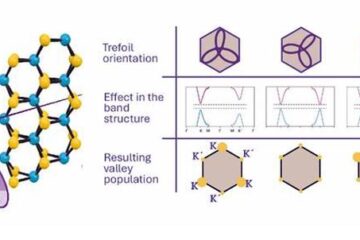A safer user interface for road transport

With increasingly sophisticated in-vehicle communication systems it could be easy to become overloaded with information when driving. Managing the driver’s information needs, COMUNICAR, has designed, developed and tested an in-vehicle, integrated multimedia Human Machine Interface (HMI) that holds the potential to improve both safety and driving comfort.
More than 40,000 people die and 1.7 million are injured on Europe’s roads each year. The direct cost is €45 billion and indirect cost three to four times higher. Because some 90-95 per cent of accidents are caused by human error, HMI systems are viewed as part of the solution under the European Commission’s integrated approach to improving road safety. This approach recommends that in-vehicle information systems should be designed to support the driver and should not give rise to potentially hazardous behaviour by the driver or other road users, not distract or visually entertain the driver so that the allocation of driver attention to the system displays or controls remains compatible with the demands of the driving situation.
In-vehicle information systems make an invaluable contribution to safety by assisting the driver through audio and visual messages. The integrated multimedia HMI design of the COMUNICAR project cover both the instrument panel and the display located in the middle of the cockpit. The HMI concept developed by COMUNICAR, integrates for the first time a broad range of messages, including the mandatory and traditional vehicle information such as the speedometer, RPM counter and warnings. It also manages innovative driver functions, such as Advanced Driver Assistant Systems that issue frontal and lateral collision warnings as well as telematic services for navigation, traffic information, phone and message facilities, and the entertainment system.
High usability, lower risk
Project manager Roberto Montanari, Centro Richerce Fiat, says the main benefit of this solution is the high usability of the layout of the display and controls, which has been tested among more than 100 end users. Partners in the project, funded under the European Commission’s IST Programme, COMUNICAR (Communication Multimedia Unit Inside Car), which ended in May 2003, achieved the following results:
A set of user-centred audio and visual layouts for the on-vehicle integrated multimedia HMIs
A set of input and output devices (based on a digital instrument cluster, a central cockpit display and a user-friendly, easily accessible haptic switch) and an on-board PC.
A software system to filter the driver’s information in real time. This information manager decides how, when and if several kinds of in-vehicle information can be provided according to driver status and driver conditions.
A set of multimedia software libraries and applications to implement the integrated HMI.
In a non-integrated in-vehicle HMI, different information may be presented to the driver simultaneously, resulting in an unexpected workload increase. In this situation, safety could be compromised, as the driver can be easily distracted. According to the tests carried out, COMUNICAR’s information manager reduces this risk through its innovative visual and acoustic display.
“The ability of the software, the Information Manager, ensures the driver is not overloaded, particularly during demanding manoeuvres,” Montanari says. “Our tests showed that the driver workload tends to decrease using the COMUNICAR HMI system.”
Positive test results
A user centred design approach was followed to ensure compliance between the innovation of the technological solution, user needs and acceptance. Participants from Germany, Sweden and Italy tested the system under different road types, conditions and driving scenarios.
User needs analysis and state-of-the-art studies helped the design team gather useful information for the first concept design and rapid prototyping tools used during the laboratory tests. The virtual prototypes of the multimedia HMI were tested in two rounds of laboratory experiments, the pre-tests and main lab tests. The main tests were performed using the simulator of DaimlerChrysler.
The final demonstrators were tested under real driving conditions in Turin, Italy and Goteborg, Sweden, using a FIAT Alfa Romeo 147 and a Volvo S60 on a 40-km circuit. Each driver did the test route twice with the system on and off. They answered a questionnaire before and after each circuit relating to system acceptance, usability and the driving pleasure factor. Vehicle data and driver activities were also measured to further understand how the system changed the driving tasks and workload.
Participants reported positive results. They found the HMI fitted vehicles easy and pleasant to drive, in particular they praised the location and user-friendly features of the haptic switch.
Under consideration by manufacturers
The consortium is actively exploiting the results of the project. Automotive suppliers and vehicle manufacturers are expected to implement the user-centred audio and visual layouts in instrument panels or in on-board information systems. Vehicle manufacturers could apply the integrated multimedia HMI within the vehicle cockpit.
Manufacturers are also the target users for the input and output devices (based on a digital instrument cluster, a central cockpit display and the haptic switch) as well as for the on-board PC. They can choose to implement either the entire integrated HMI or separate parts.
“Manufacturers are working to implement this solution into the production phase,” he adds. “Today, all of them are considering systems that are capable of managing the driver workload. They recognise this as critical to improve the safety and market success of a future in-vehicle user interface.”
Media Contact
More Information:
http://istresults.cordis.lu/All latest news from the category: Transportation and Logistics
This field deals with all spatial and time-related activities involved in bridging the gap between goods and people, including their restructuring. This begins with the supplier and follows each stage of the operational value chain to product delivery and concludes with product disposal and recycling.
innovations-report provides informative reports and articles on such topics as traffic telematics, toll collection, traffic management systems, route planning, high-speed rail (Transrapid), traffic infrastructures, air safety, transport technologies, transport logistics, production logistics and mobility.
Newest articles

Simplified diagnosis of rare eye diseases
Uveitis experts provide an overview of an underestimated imaging technique. Uveitis is a rare inflammatory eye disease. Posterior and panuveitis in particular are associated with a poor prognosis and a…

Targeted use of enfortumab vedotin for the treatment of advanced urothelial carcinoma
New study identifies NECTIN4 amplification as a promising biomarker – Under the leadership of PD Dr. Niklas Klümper, Assistant Physician at the Department of Urology at the University Hospital Bonn…

A novel universal light-based technique
…to control valley polarization in bulk materials. An international team of researchers reports in Nature a new method that achieves valley polarization in centrosymmetric bulk materials in a non-material-specific way…





















